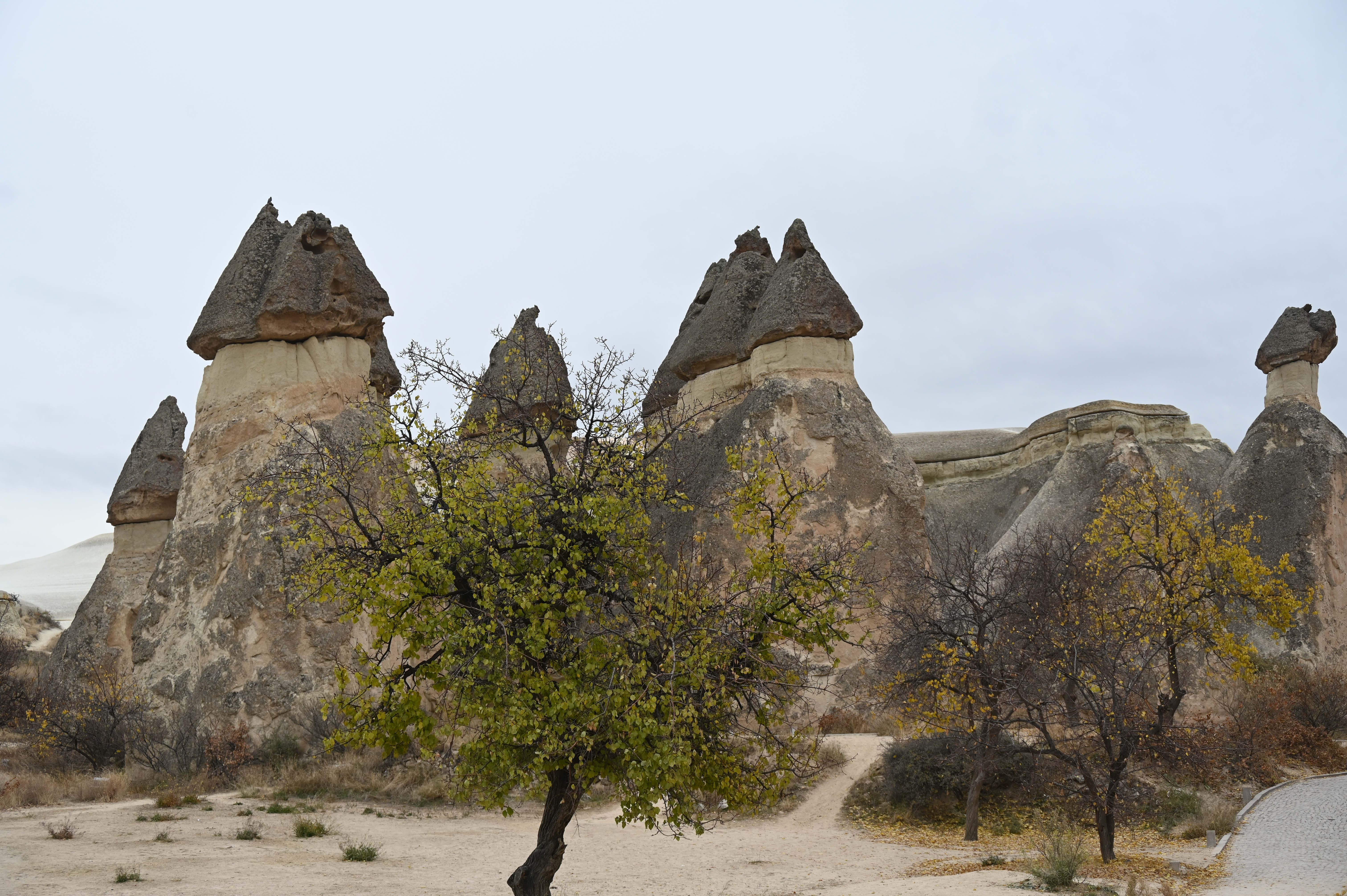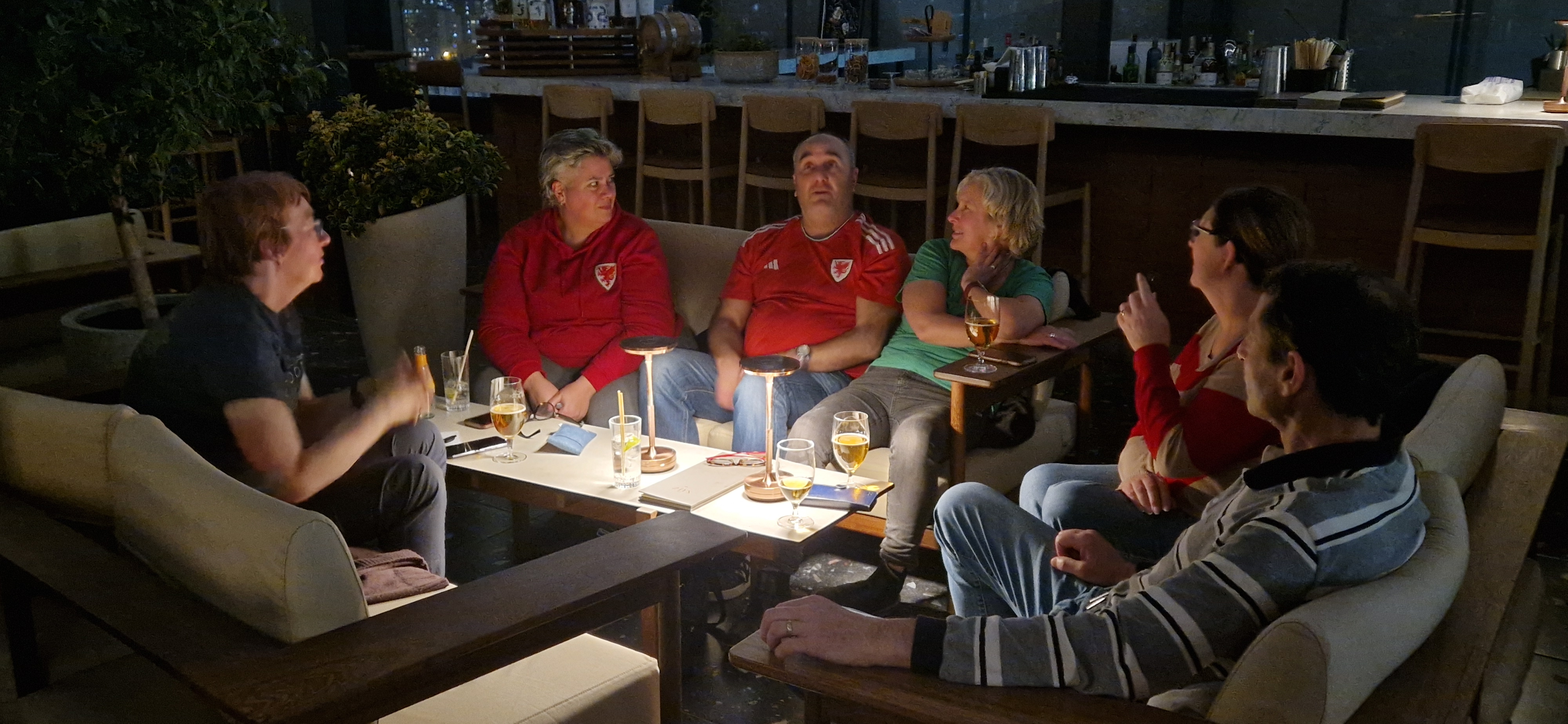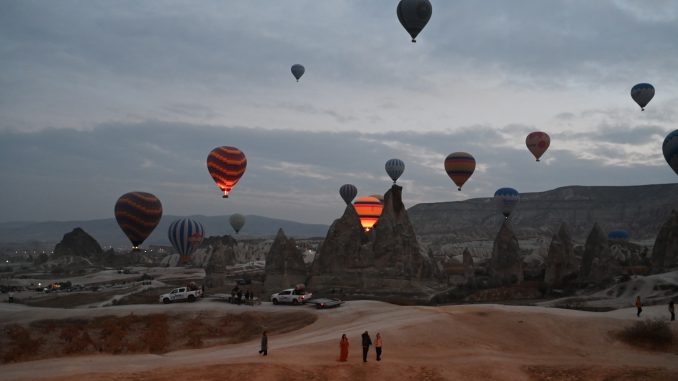
An action-packed day featuring hot air balloons, ancient cities beneath the ground and magic carpets.
It’s a baron land that has changed hands for centuries with the ebb and flow of empires. Many of the population are deeply religious, there are huge underground cities and people travel by hot air balloons.
No, it’s not the planet Dune. There are no giant worms. I’m talking about Cappadocia, a region I had never heard of until Wales were scheduled to play Turkey nearby, but now I will remember it forever.
It is a long day, so I’m going to split this post in two
PART ONE – CAPPADOCIA VIEWED FROM A HOT AIR BALLOON
We were up incredibly early for the morning after an evening game. So early, breakfast hadn’t started being served in our hotel yet. The hotel very kindly provided us with a packed breakfast, without being asked, which was nice. But the sixteen brave souls that had signed up for our morning mission were not going to miss this once in a lifetime experience. We were going up in a hot air balloon.

Everyone climbed aboard the minibus as it pulled up outside our hotel and fell asleep again. After about half an hour we arrived outside mission control for Voyager Tours. The ‘reception area’ has tables and chairs, complimentary coffee and snacks. We sit down and munch on our packed breakfasts. The room fills up as other parties from around Turkey join us. This is just the start of the logistical juggling act that makes what will happen over the next two hours incredibly impressive. People are being picked up from hotels all over the area to arrive at the same time. And this is just one of many air balloon companies in the area. At the height of the season, there can be up to three thousand people in around one hundred and fifty balloons, all launching at the same time, before the sun has even come up.
Hot air balloon in Cappadocia started in 1991 with the competition of professional hot air ballooners from all over the world. After this first visual show, the first Cappadocia hot air balloon company was founded. The first balloon flight took place in 1991. It was operated as a single company for a long time.
With the increasing interest in Cappadocia, the interest in ballooning has also started to increase. In the following years, they started operating in other balloon companies. There are 25 balloon companies. The number of balloons is about 250. The number of flying balloons is maximum 165 pieces per day. An average of 500 thousand people annually in Cappadocia enjoy this incredible experience that allows daily weather conditions.
History of Cappadocia Hot Air Ballooning – Fly Cappadocia Balloon
Reading that sounds impressive. But trust me, nothing prepares you for the moment your minibus turns off the main road and into the mountains and you see hundreds of huge balloons starting to inflate in the dark. They are in different stages of inflation, some just starting to look like balloons, some almost fully inflated and occasionally illuminated by the firing of the burner.
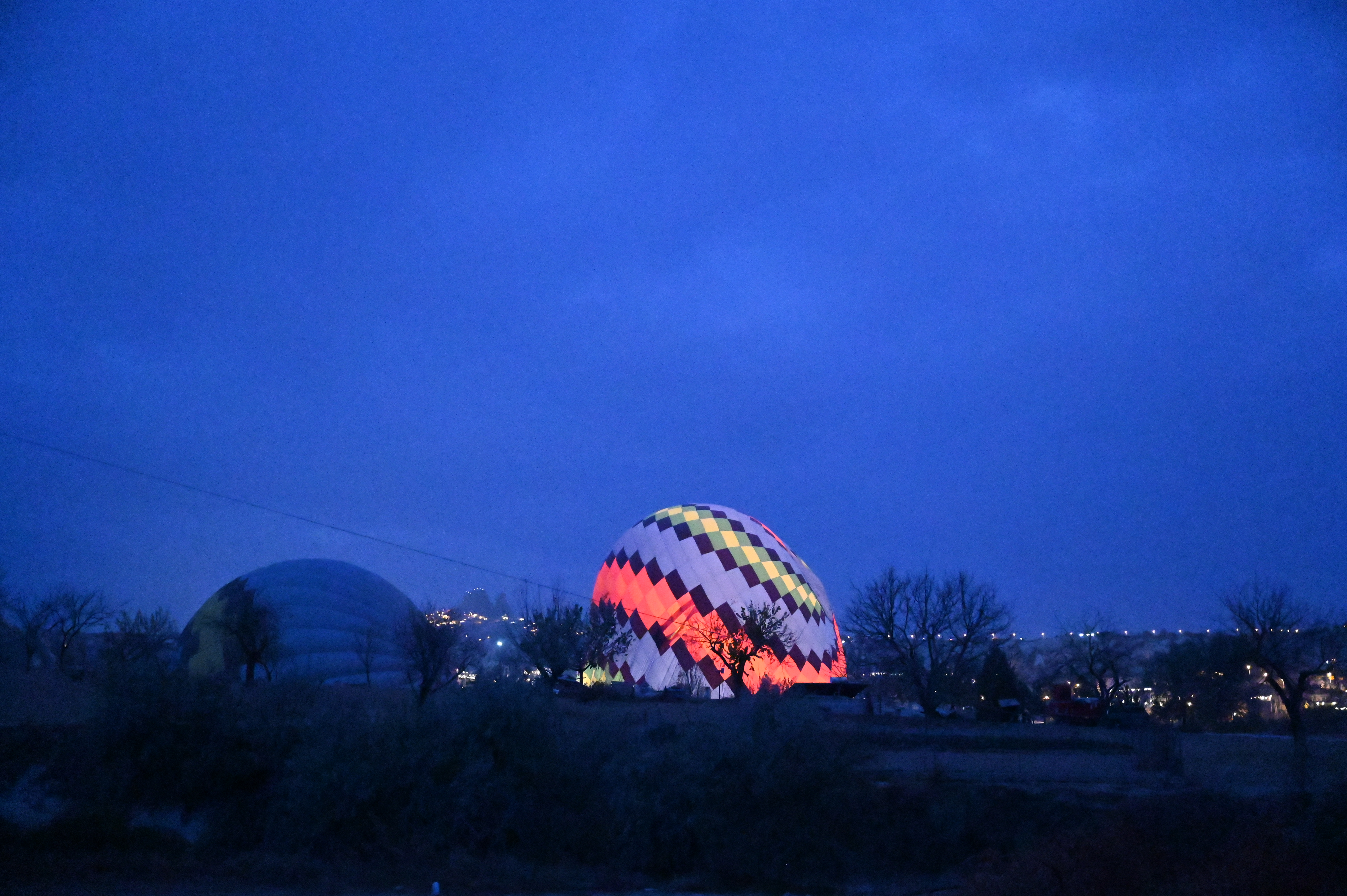
The balloons go up most days of the year, only being grounded by occasional poor weather. And weather is critical to flying these things, they have no brakes, no steering wheel, no accelerator. The pilot can make it go up and down, but other than that we are the mercy of the wind in terms of which way we go. A good pilot can read the thermals and the wind currents to make it go faster or slower, but there is no control over direction.
This is why the balloons tend to go up at dawn. This is when the air currents are at the most predictable levels, both for wind speed and direction. The air cools all night and stabilizes. As the sun comes up, the air heats up and rises, allowing cold air to replace it, which then warms up and rises – and so it goes, creating wind. Going up at dawn means wind is minimal, allowing experienced balloon pilots to navigate the subtleties of the wind at different altitudes and steer the balloon over hills, fields and streams and eventually to a good landing spot. Hopefully.
Our basket holds sixteen people in four compartments of four, with the pilot having his own compartment in the centre.
Our preflight safety talk consists of instruction on how to brace for landing. With no control over speed, there is a fine line between a gentle touch down and being dragged along the floor at thirty miles an hour. There are no toilets, no parachutes, no lectures about how to put a lifebelt on, just some slightly tongue in cheek humour from our pilot, who immediately has our confidence.
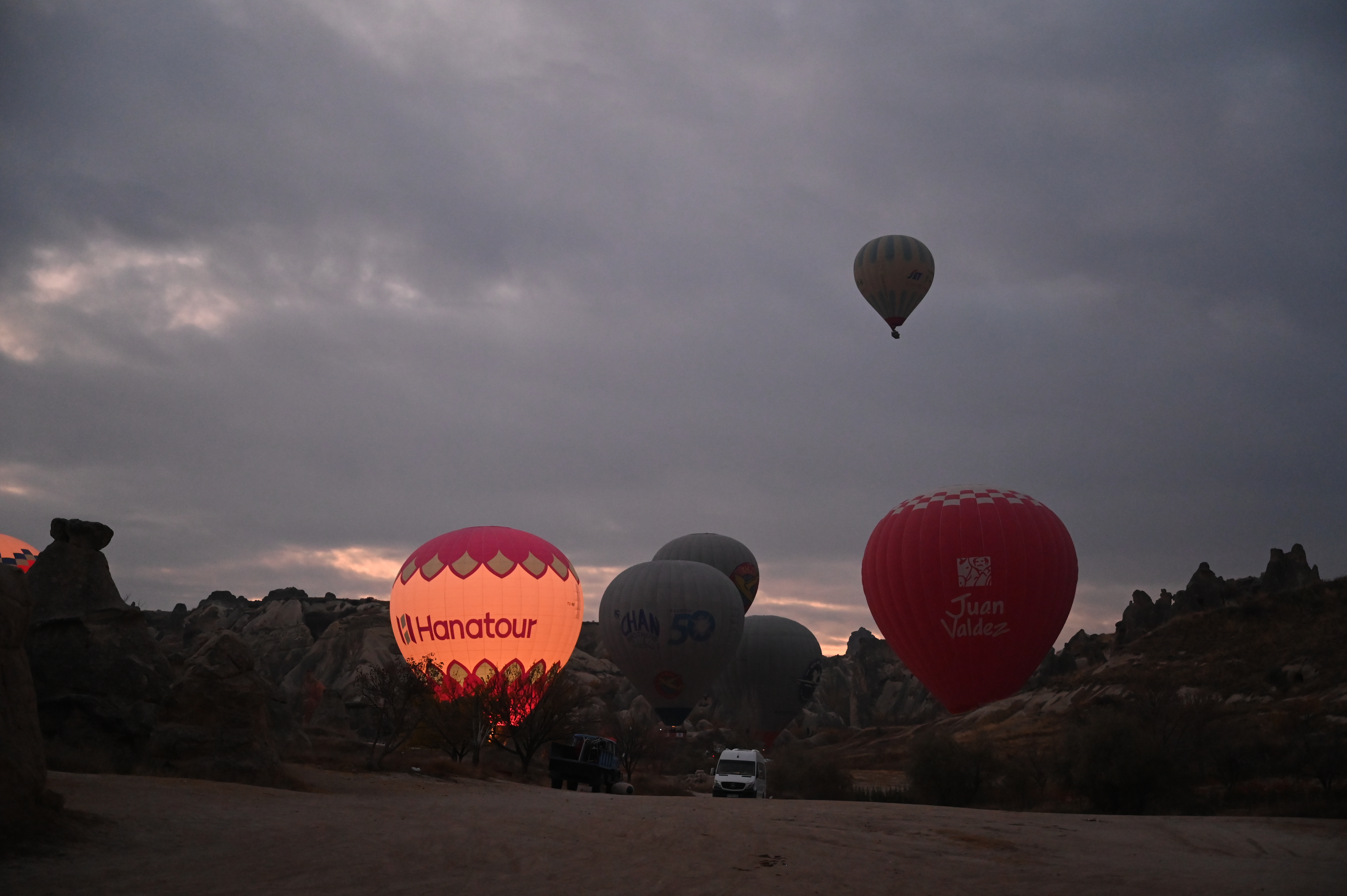
We are in awe, looking at the balloons around us, some in full view, some only visible behind a small ridge, some already airborne. Take off is so smooth and gentle, we hardly realise we are in the air. As we rise, we slowly become aware of the spectacle that we are in the middle of. It is the stuff of postcards, holiday brochures and fridge magnets. Over a hundred balloons rising as the pilot opens up the burner, falling as burner is left off. Drifting at different speeds, depending on the air current at the different altitudes.
Our pilot entertains us with information like “we are now at the same height as the Eifel Tower” or “We are now at the same height as the Empire State building”. Our pilot manages to keep us well away from other balloons but he points out balloons below us bumping into each other. it is not as bad as it sounds, it is the balloons that touch, not the baskets, and they are flexible, so no damage is done. On this occasion. Our pilot even takes time to tell us the history of the hot air balloon.
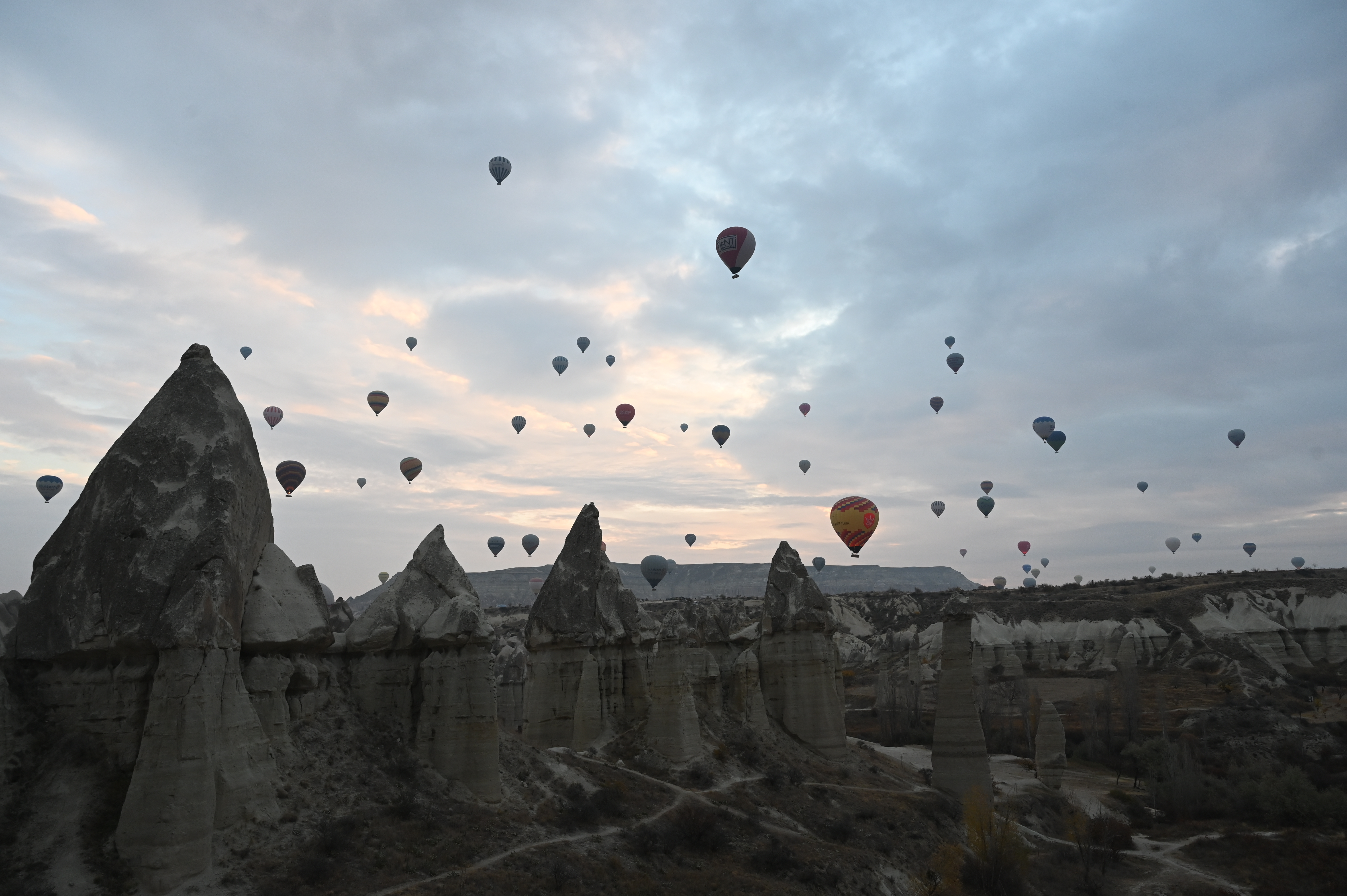
French scientist Jean-François Pilâtre de Rozier famously launched the first hot air balloon carrying a duck, a sheep, and a cockerel in 1873. The Montgolfier brothers designed balloons that were made from paper-lined cloth. As you can imagine, a balloon made of paper with a flame being blasted into it sounds like a disaster in the making, and the Montgolfier brothers weren’t stupid enough to actually fly in such a death trap. They let Pilâtre de Rozier and François Laurent d’Arlandes make the first flight. Amazingly they lived to tell the tale and hot air ballooning soon took off (pun intended).
Whilst some of today’s balloons were simply going up and down, out pilot has over three thousand hours under his belt and is a flight instructor, so he is moving in and out of the currents, taking us almost down to the ground in ‘Love Valley’ (more on that later) and back up, much to the appreciation of the crowd that had gathered at the top of the cliff overlooking the valley. As we rise again we see thousands have gathered to just watch this spectacle from the ground.

There really is no need to be scared, we felt totally safe at all times, but even if you are really scared, it is worth getting up at dawn just to watch the balloons going up. I’m struggling to think of any other spectacle I have had the honor of witnessing in person that can beat this. It’s right up there with whale watching in Iceland, Bale’s goal against Scotland in the 2014 World Cup qualifier in Cardiff, and that time Corky got a round in.
Of course, eventually, you have to come down before the winds pick up. But where? Throughout the journey, through radio and GPS tracker, the pilot and the ground crew are in constant touch and as we start our final descent we look down to see a 4×4 pick up and trailer racing to our location. We brace for crash, just in case the landing goes wrong, but after a very brief touching of the ground, the burner is fired to lift us slightly and we land on the back of the trailer. These guys really do know what they are doing.
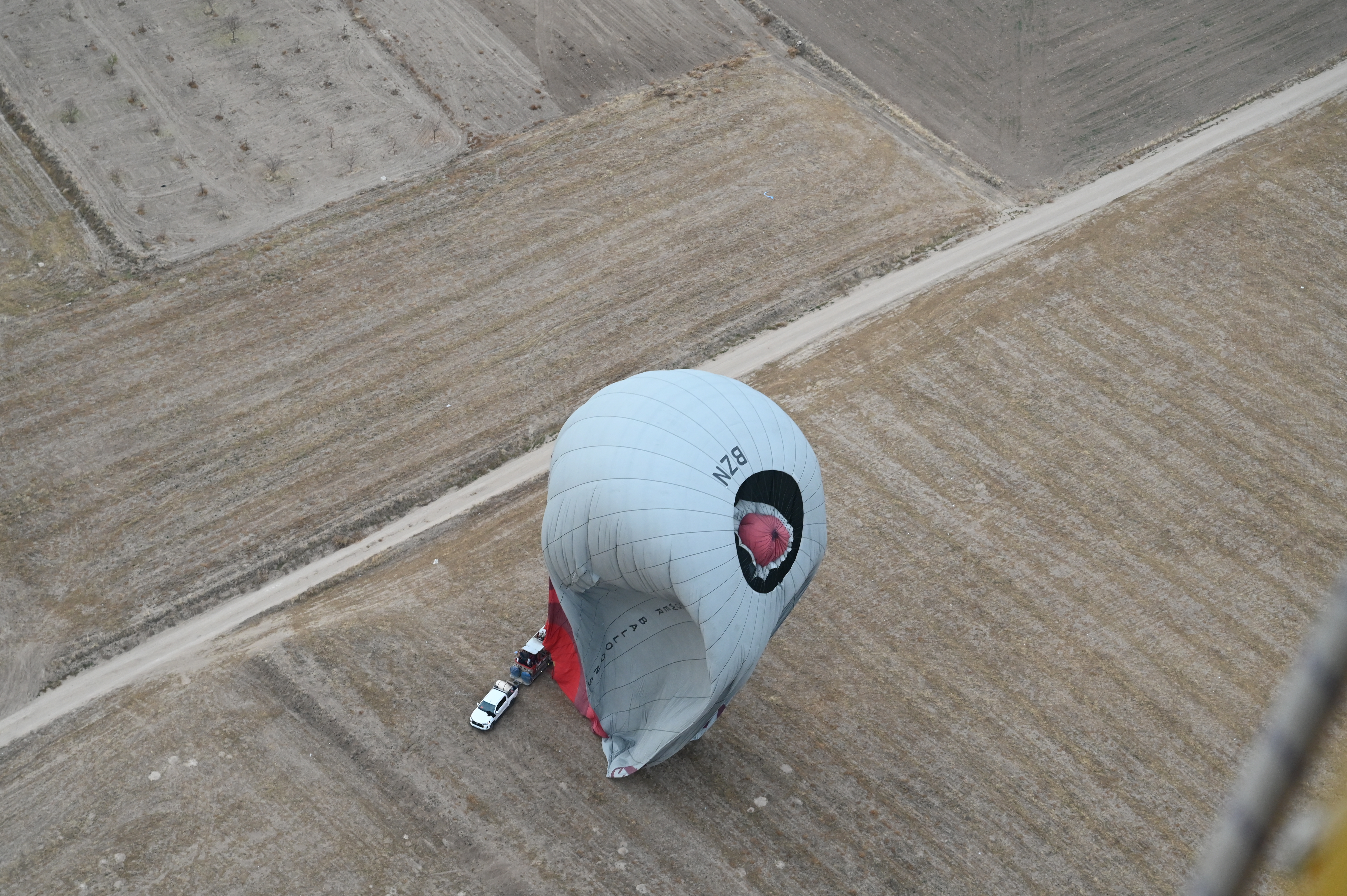
Having done the easy bit, next up the hard bit. Getting out of the balloon, which for some unknown reason is much harder than getting into it. Then we have champagne and toast the fact that we are still alive, whilst getting out of the way of another balloon about to land on our heads.
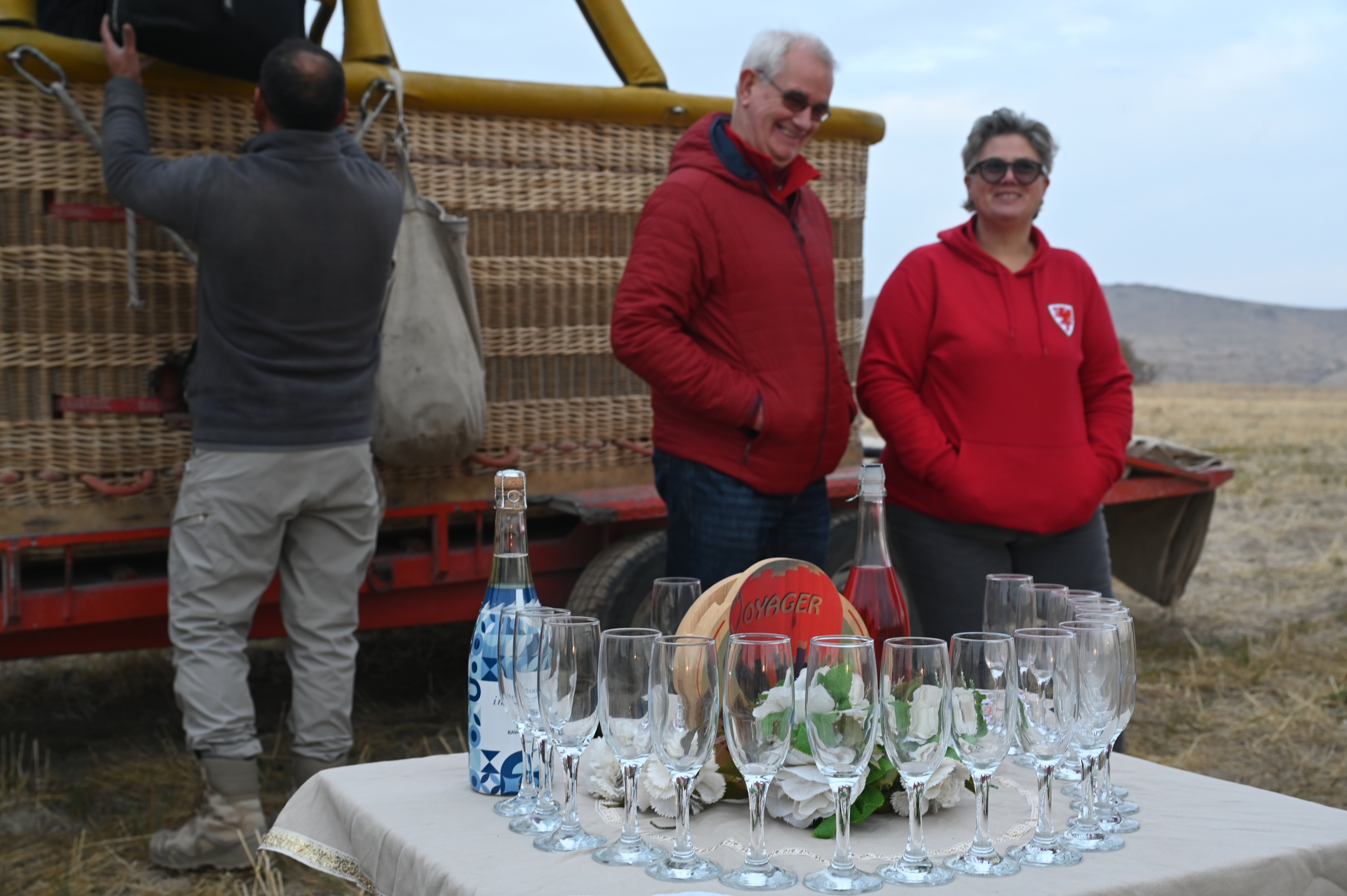
Getting back to base is a massive operation. Not for us, but for the police. We just pile into our minibus, but there are hundreds of other minibuses heading back to base, so the police are there to control the traffic coming back onto the main road. We stop briefly and drop off our pilot. I think to myself, ‘not a bad little number, an hours work and finished before breakfast’. Then we are taken to a restaurant with an amazing view and have our second breakfast of the day. We are joined by thirty others from the Wonky Sheep Flock who didn’t fancy the balloon ride.
PART TWO: CAPPADOCIA VIEWED FROM A BUS
Our breakfast, in the amazing Montana Cafe and Restaurant, appears to be never-ending. Course after course of cheeses, breads, olives and all sorts just keep on coming. All served with a view over the incredible Pigeon Valley.
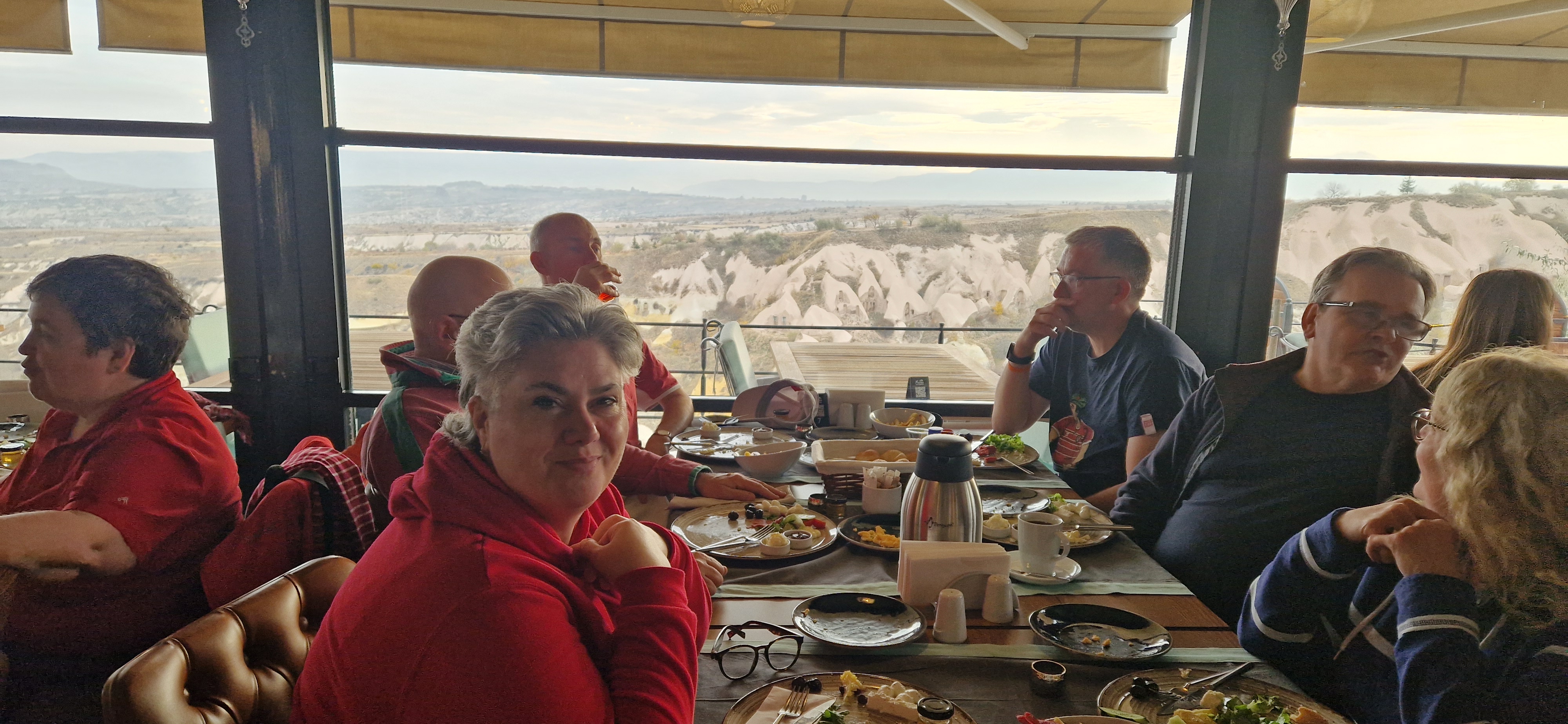
Pigeon Valley (real name Guvercinlik Vadisi) earned its name from the countless manmade dovecotes (pigeon houses) that have been carved into the soft volcanic tuff. Since ancient times pigeons have been used in the Cappadocia region for food and fertilizer for the infertile soil. These days, they get their fertilizer elsewhere, so the hundreds of thousands of pigeon that were once well looked after now have to fend for themselves, so on the whole have buggered off elsewhere.
Just around the corner is the village of Göreme, which sits at the heart of a network of valleys filled with astonishing rock formations known as ‘fairy chimneys’. Ancient civilisations carved into these chimneys to create homes for themselves. It looks spectacular and I had hoped we would stop off there, but the area has become a major tourist trap and most of the amazing ancient troglodyte homes are now hotels and restaurants. There’s even a Burger King. I’m disappointed that we are not stopping, but can understand why.
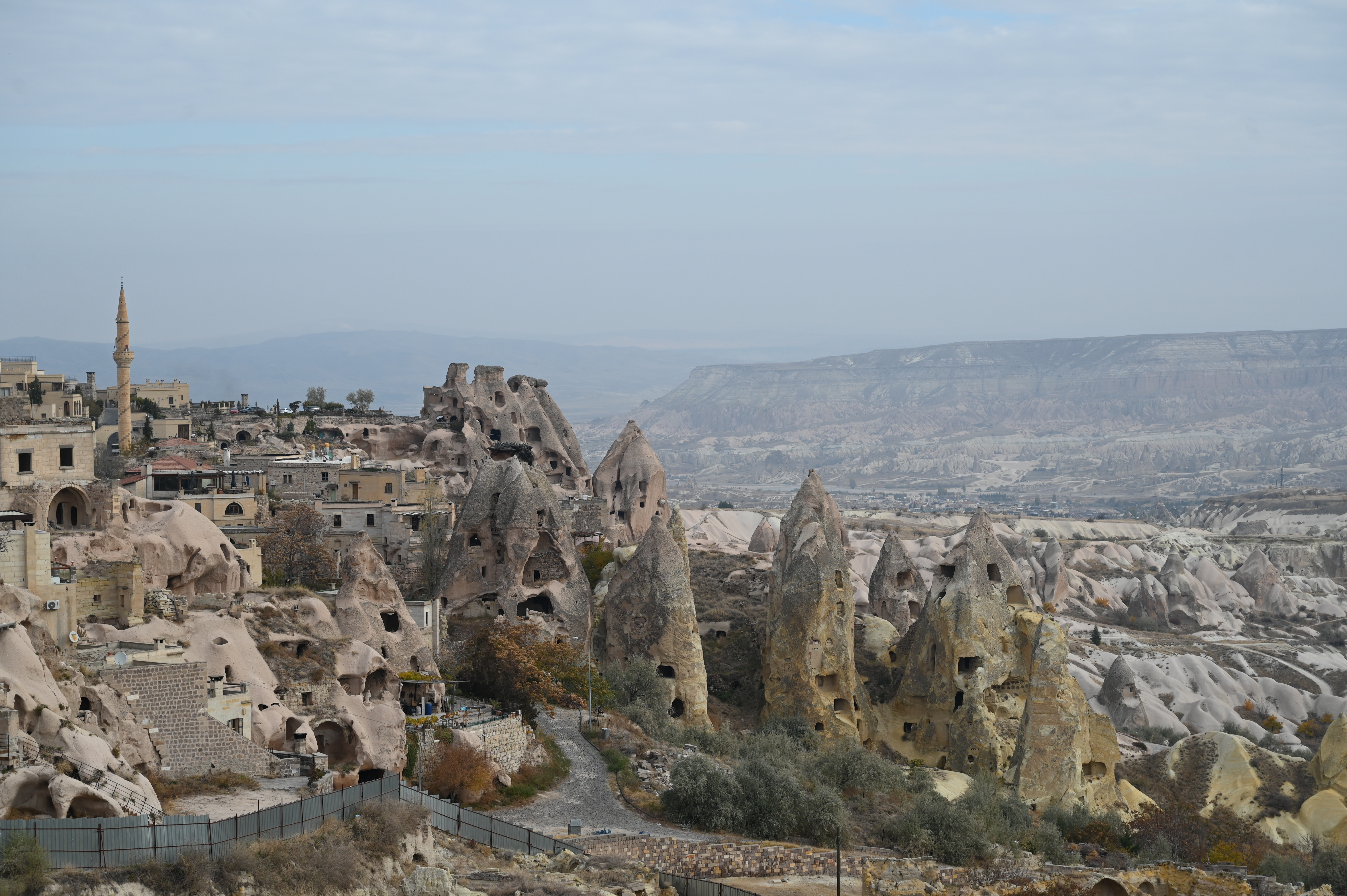
Whilst I had been thinking our balloon pilot had a cushy one hour a day job, it turns out he had just gone home to change and returned to be our tour guide for the day.
Our first stop is the ancient Kaymakli underground city. The city dates back to 800 of the BCs, when villagers initially tunneled into the volcanic rock just to expand their homes – like loft extensions but underneath instead of on top. But this practice expanded massively in the Eastern Roman (Byzantine) era, when it was used for protection from Muslim Arab raids during the four centuries of Arab–Byzantine wars (780–1180).
Villagers could retreat underground for months at a time to hide from the raiders, being totally self sufficient. They devised amazing techniques for ventilation, disposal of human waste and storing food that did not require cooking. The city goes down eight levels and could accommodate three thousand people living underground together. It has communal kitchens, a church and even a temporary mortuary. Livestock were also kept down there.
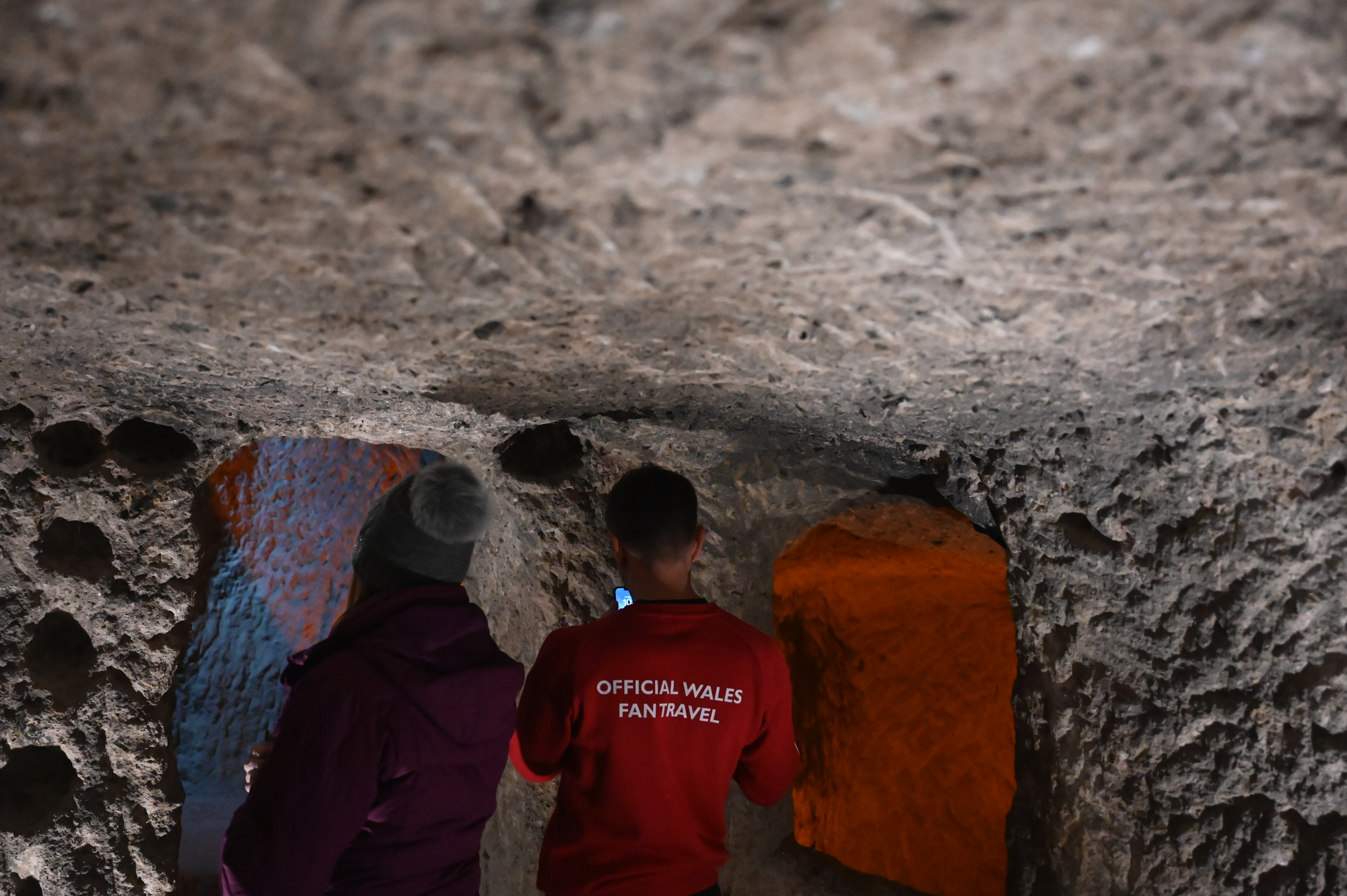
This is just one of several underground cities in the area. It was connected with the Derinkuyu underground city through 8–9 km (5.0–5.6 mi) of tunnels. Derinkuyu could house up to twenty thousand people.
The first four levels are open to the public. Whilst many of the chambers are quite spacious, some of the connecting tunnels are a bit like potholing and not really suitable for the claustrophobic, the tall or the fat.
Around the entrance to the city there is a huge market/gift shop with around a dozen shops selling mostly the same things, including ornaments, tablet cases and fridge magnets.
As we walked in towards the city, a photographer had been snapping away making sure he had photographs of each member of our party, which seemed a bit odd. By the time we were ready to leave a stall had been set up with bespoke ashtrays (or they might have been plates) with our faces on. Fair play to the Turks, they never miss an opportunity to sell you something. Any other time of the year, nobody would’ve bought one but, hey, Christmas is just around the corner.
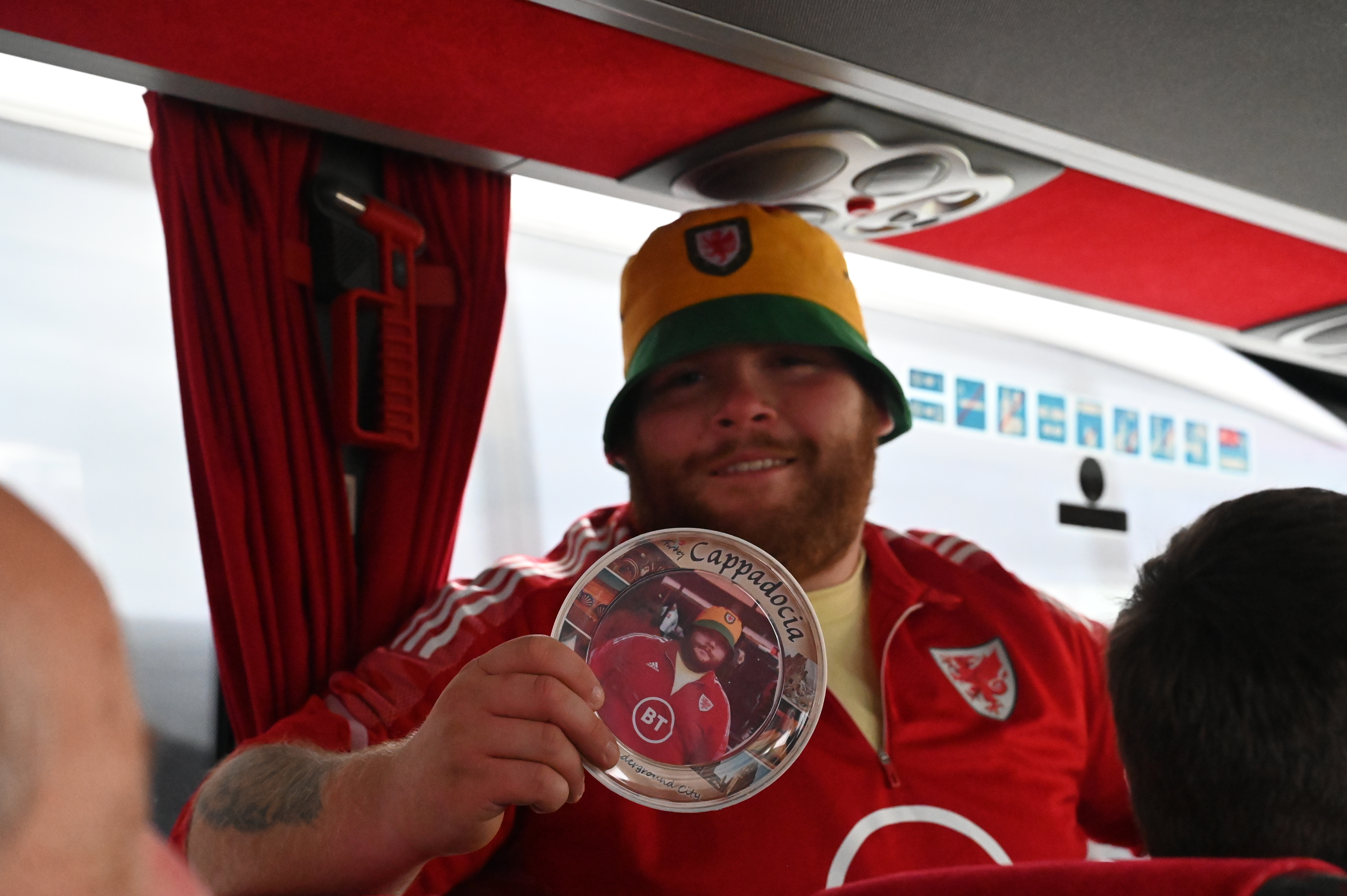
Next we move on to Monks Valley. Or Pasabag Valley, or Vadisi, depending on who you talk to. Our guide/pilot, called it Monks Valley, a reference to the Christian monks who once hid out in the rocks. There are ‘fairy chimneys’ here once again. They are basically natural towers created but the odd erosion of the volcanic rock. Monks had climbed to the top and carved themselves bolt holes near the top that were almost impossible to access by anyone other than the monks with their climbing ropes that they would pull up once home. We wander around and take photographs.
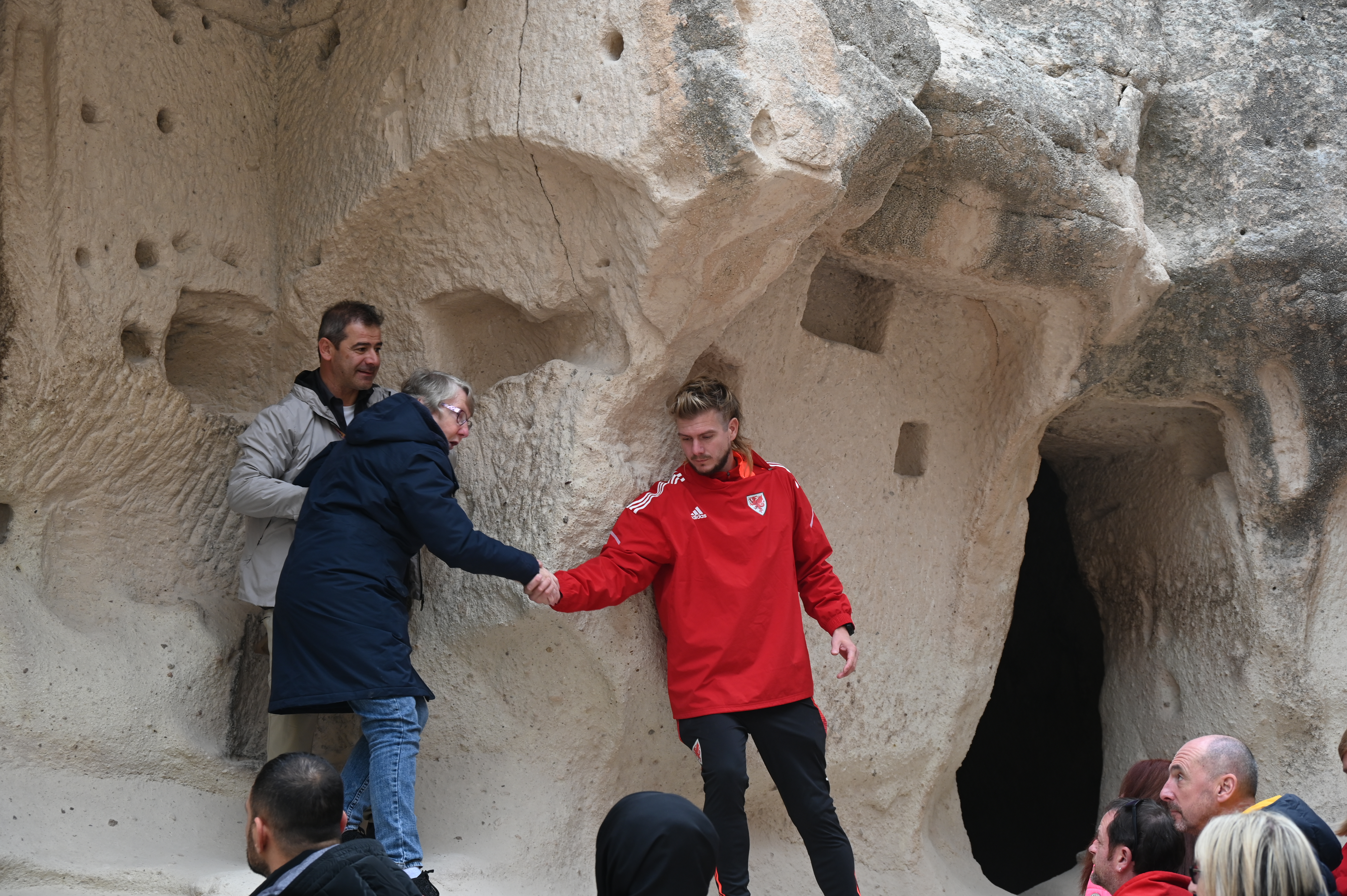
As we exit through the now familiar gift market, full of stalls selling the same thing, although this time Monk Valley fridge magnets, instead of underground city fridge magnets. There was only one stall selling aphrodisiacs as far as I could tell. I didn’t notice it, but Posh’s stunt double was all over it like a rash.
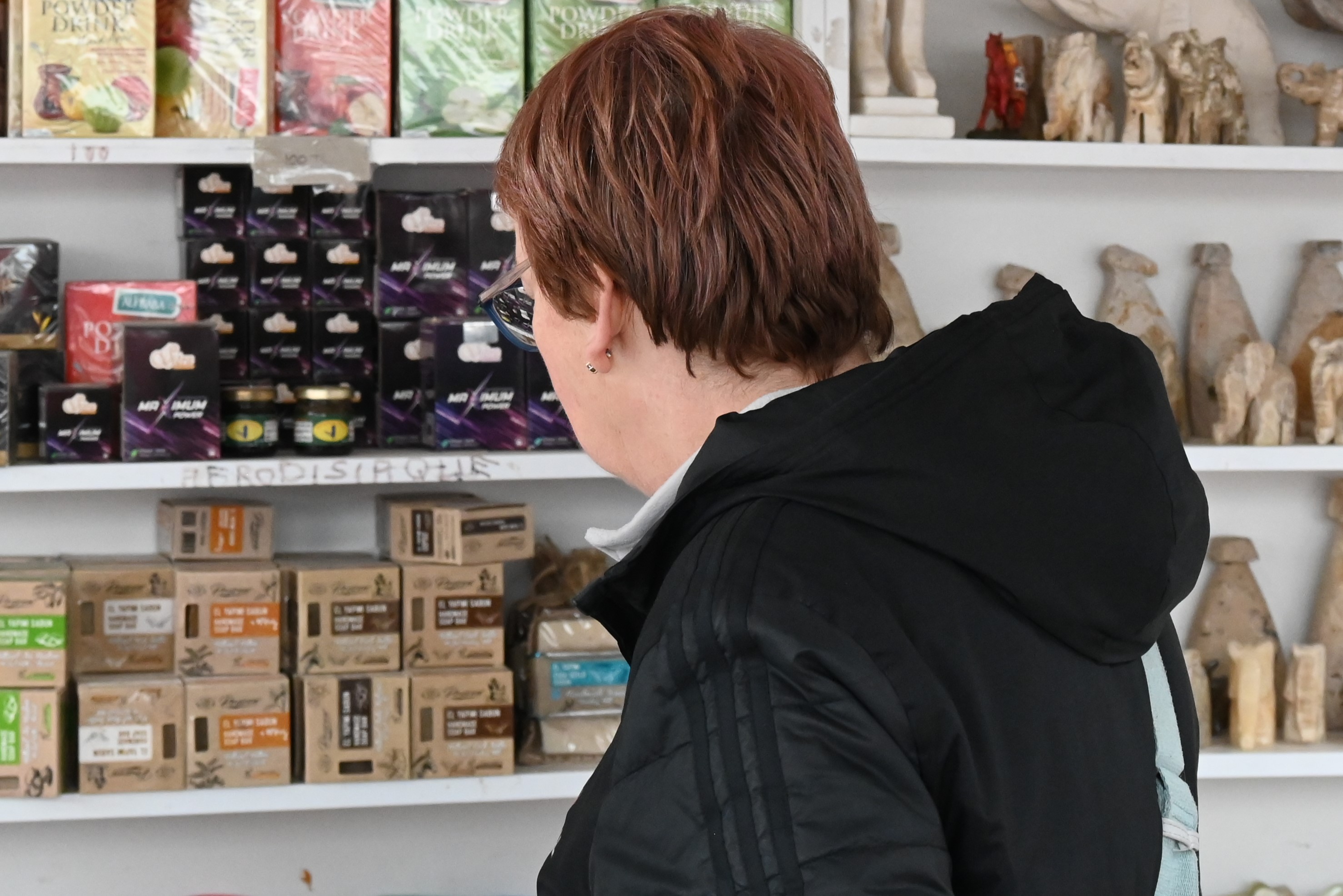
It was such a fun packed day, I’m struggling to remember the order in which we did things. We had a delicious buffet lunch in a huge restaurant. We stopped at a shop where they sold traditional stuff, like Turkish Delight, Turkish Tea and a cure-all insence concoction that cures asthma, covid and disappointment.
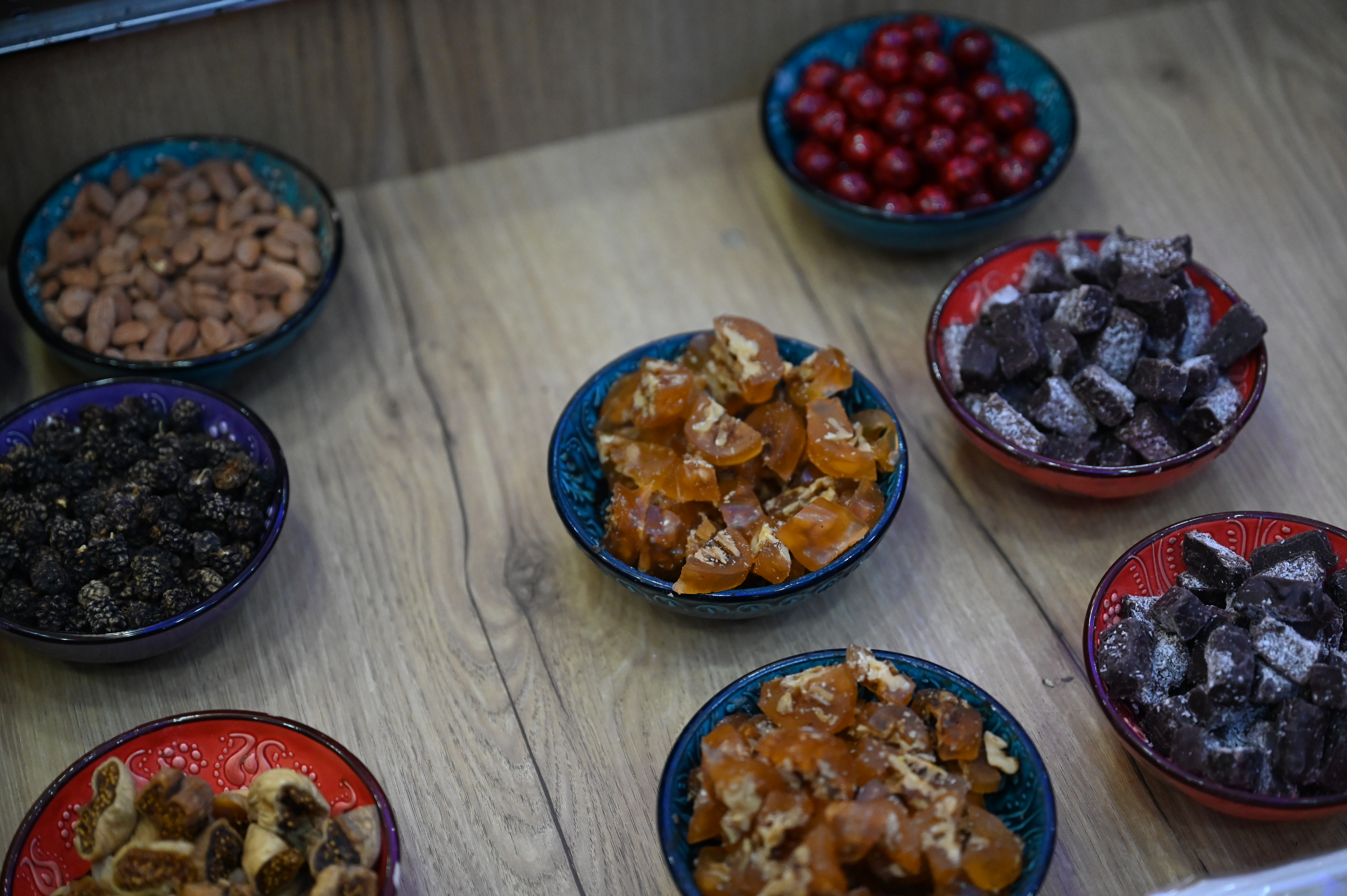
We pulled up outside a carpet factory and you could hear the collective rolling of eyes of the seasoned travellers that knew this was going to end with people trying to sell us carpets that could be shipped home for us. First we went into a room to watch and learn about weaving woollen carpets and our guide went to great lengths to explain why some were more expensive than others. We trudged from the wool room to the silk room and I think most were surprised to find that the process of creating silk is actually fascinating. Needless to say he then explained why silk is even more expensive than wool. Although after learning how many silk worms are boiled alive I won’t be buying silk anytime soon.
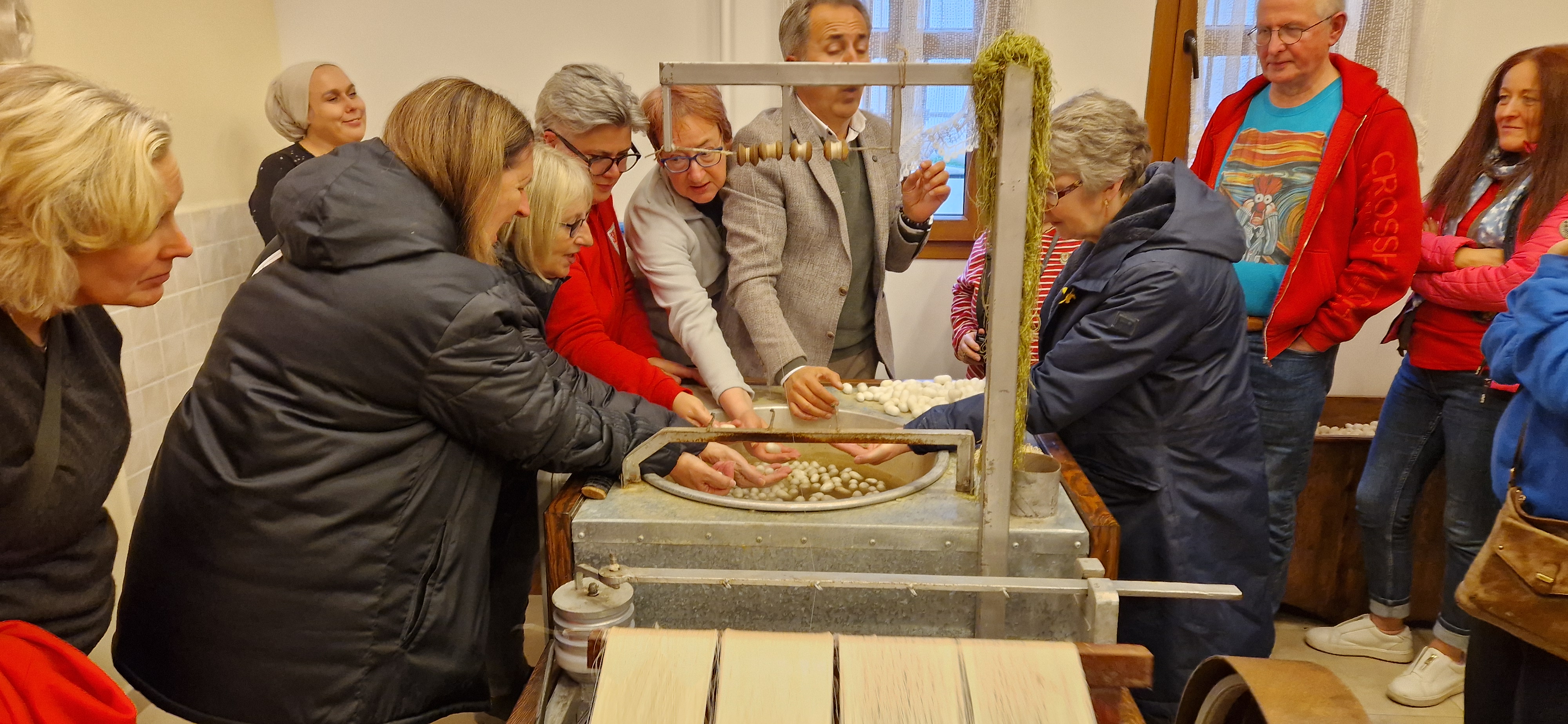
We went through the motions of going to the sales room, although I think he could tell from the look in our eyes that he wasn’t going to sell any carpets, even if they accepted all major credit cards and and they could ship them home for us. He knew we were the kind of people that want Turkish Delight, ashtrays with our faces on and fridge magnets.
Final stop of this epic tour was Love Valley, the valley we had dropped into at the start of the day in the balloon. Again, as with many of the geological oddities in the region, the weather has eroded the volcanic rock into towers. In this case, phallic looking towers. Hence Love Valley. We find ourselves standing where the crowds had observed the balloon spectacle at dawn. On the top of the cliff is a cafe, some ‘art’, and a gaggle of quad bike riders wearing bizarre helmets that resemble second world war German army helmets.
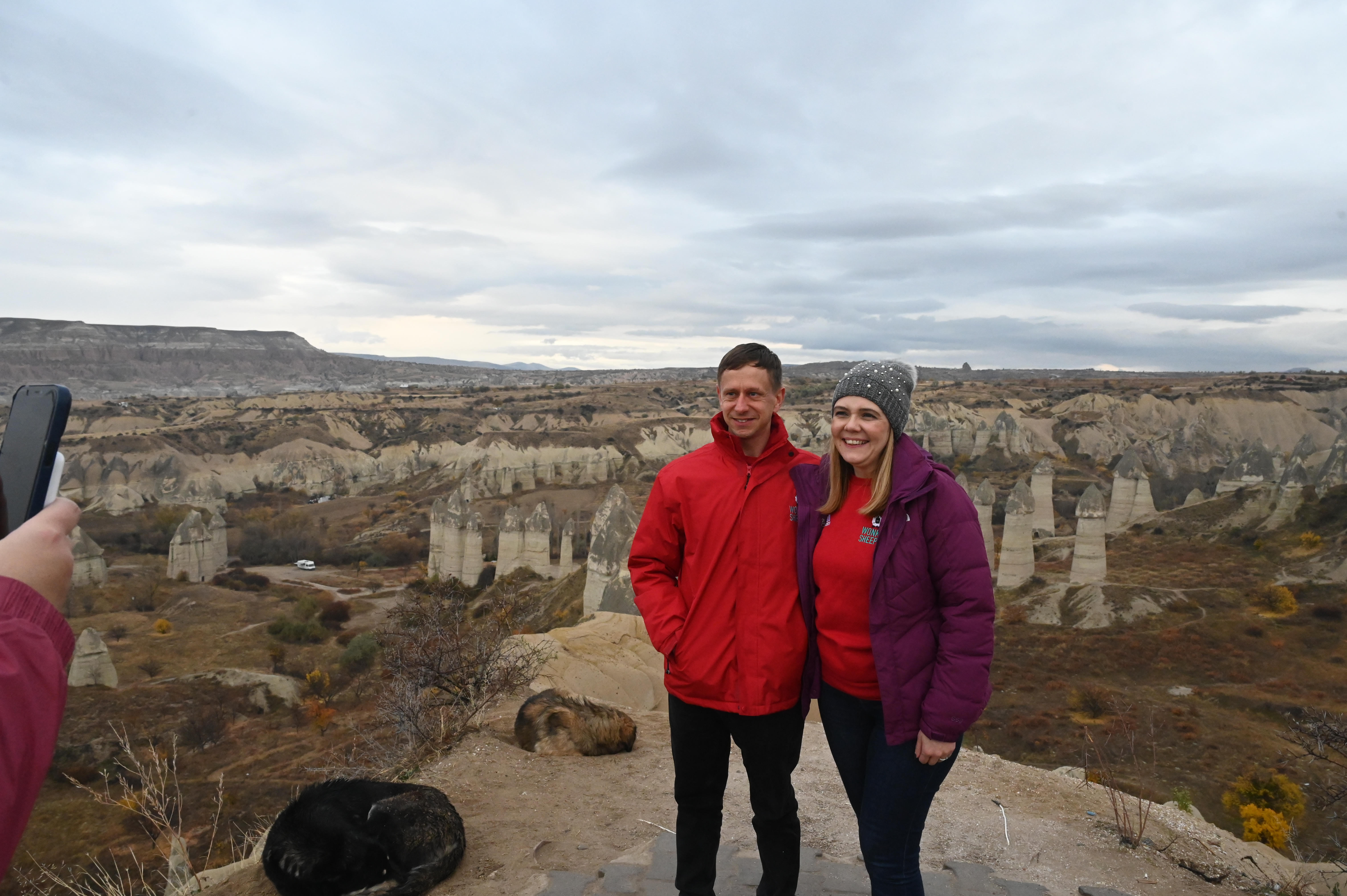
Also on top of the cliff are a number of camels chained up. I’m not sure camels are indigenous to Turkey so look it up. Apparently they have been in Turkey for thousands of years (not these specific camels, obviously) and are used for riding and camel wrestling. I’m not sure what camel wrestling actually is, but I assume the camels on this cliff are of the riding variety.
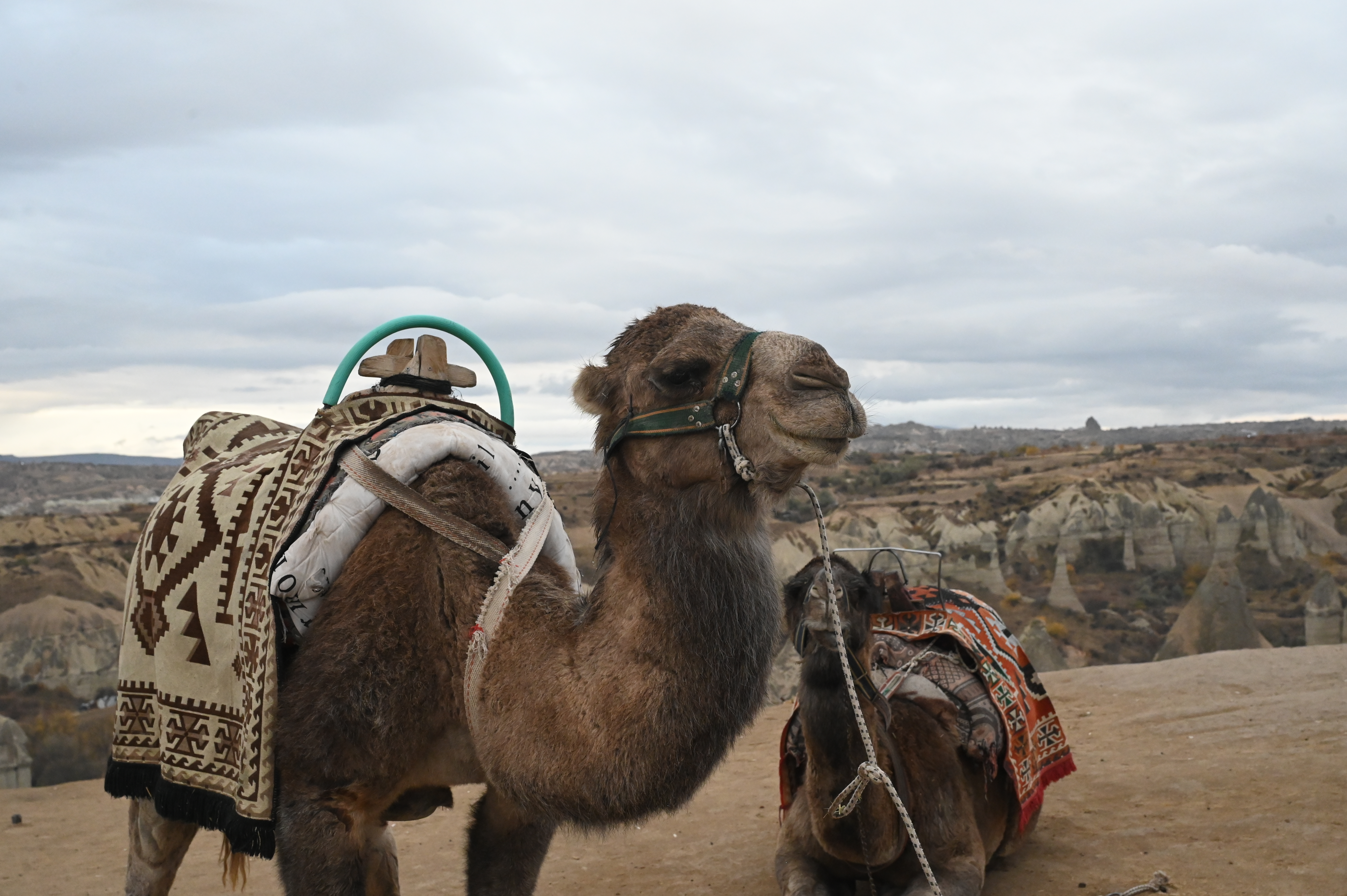
And so the tour draws to a close and we head back to the hotel. We go straight up to the top floor for one last drink. We are joined by some old comrades and reminisce about past trips. One drink turns into half a dozen drinks. And a meal. The perfect end to a classic trip.
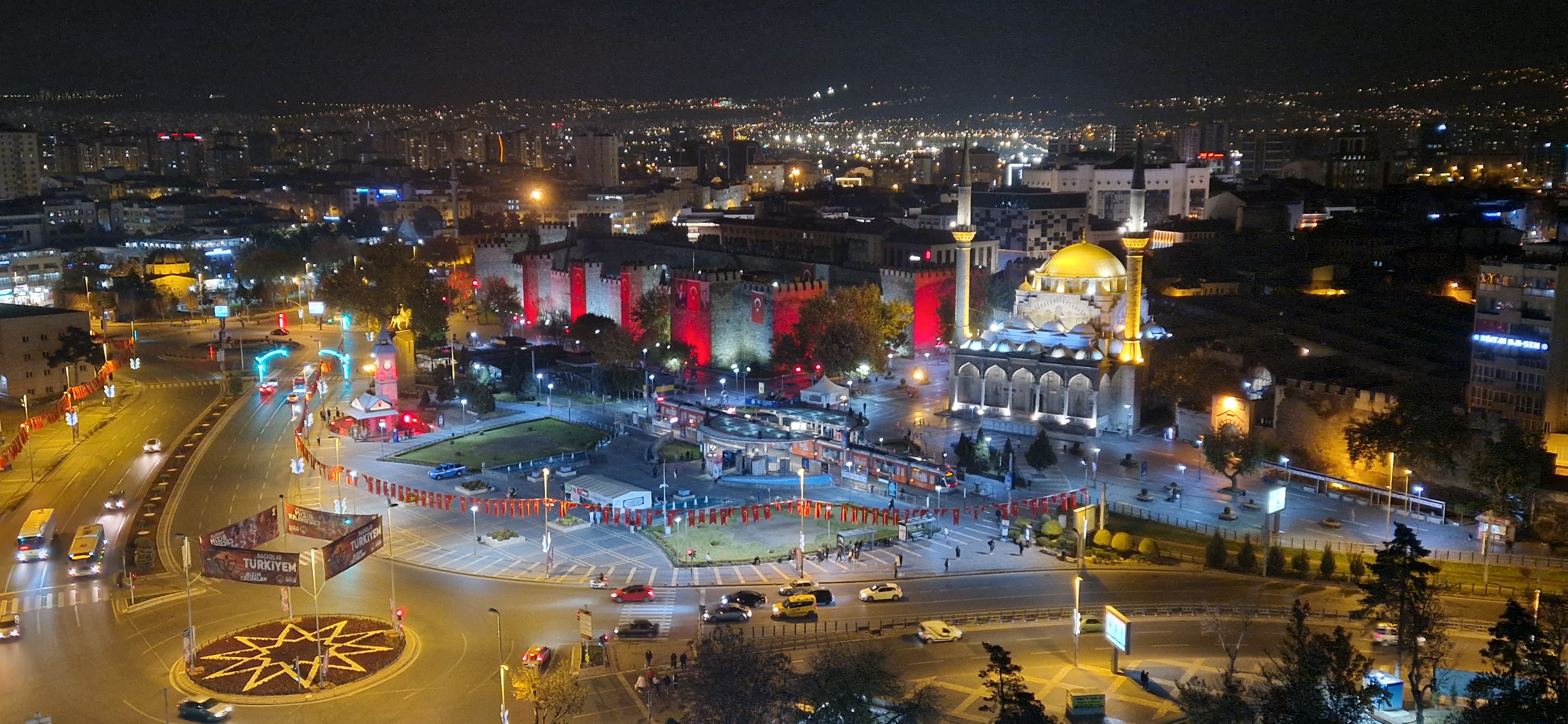
FINAL THOUGHTS.
We normally travel independently and come out for much longer than this. But there’s a lot to be said for being in a hotel full of mates and there’s a lot to be said for someone else organising everything.
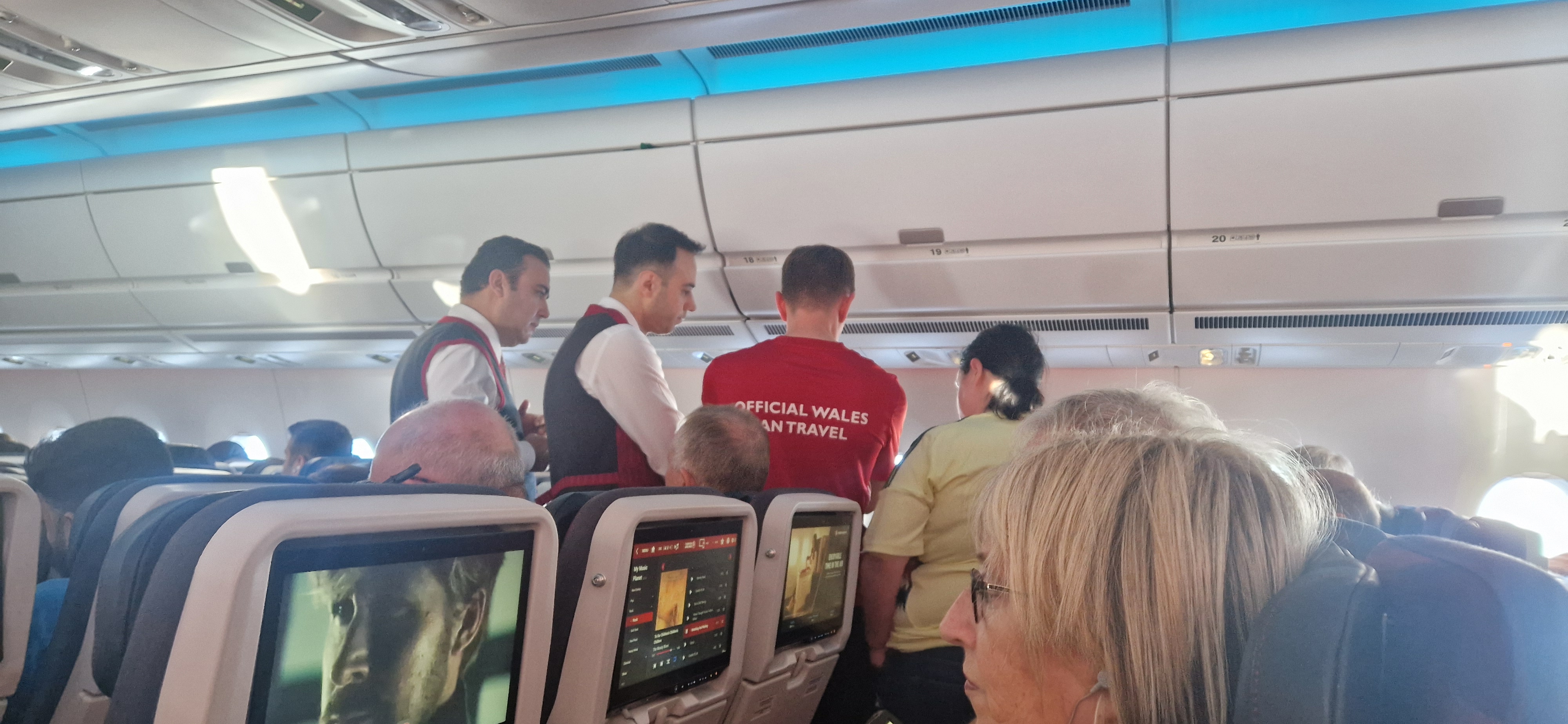
Hats off to Wonky Sheep, hats off to the Wonky Massive, hats off to everyone in the Red Wall that make #WalesAway what it is. Oh, and the squad and the FAW.
As I type this, Wales have beaten Iceland and Montenegro have surprisingly beaten Turkey. Meaning no play off needed for Wales, we are top of the league.
Next up, World Cup qualifiers.
